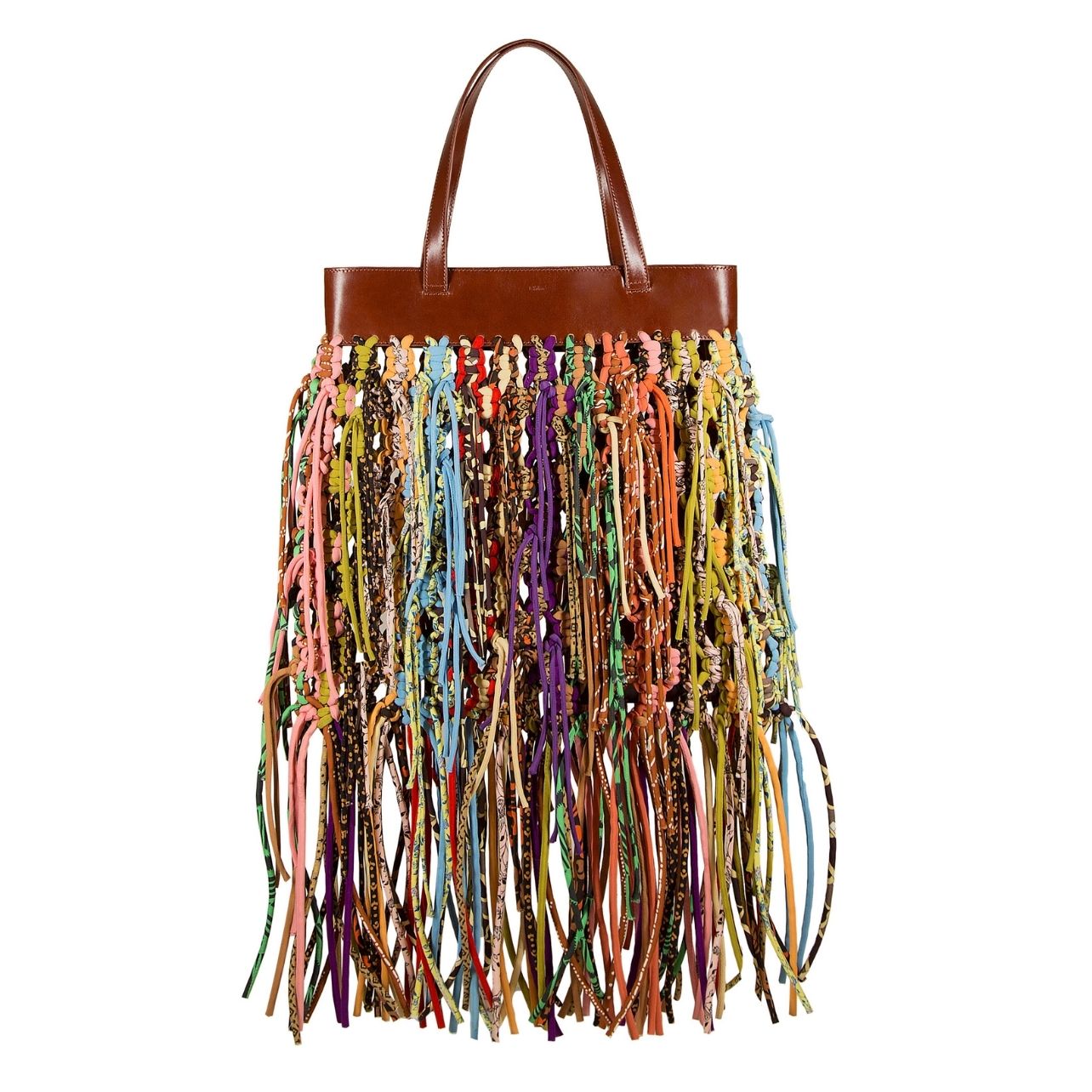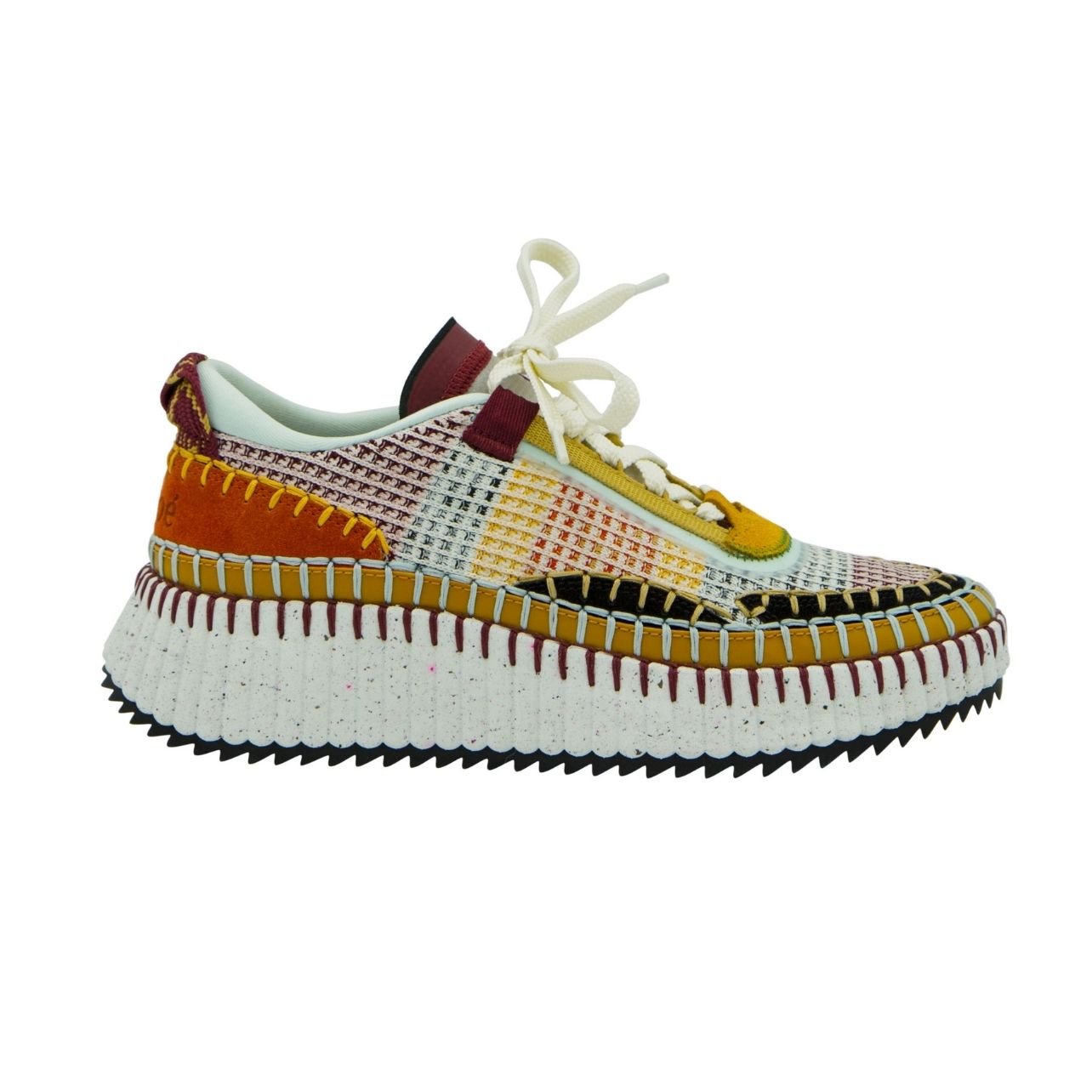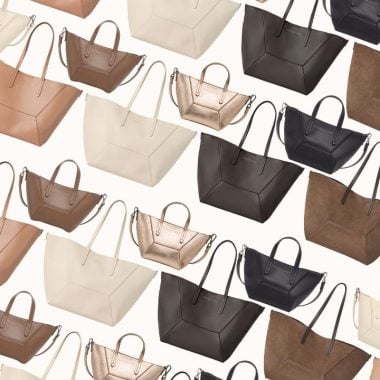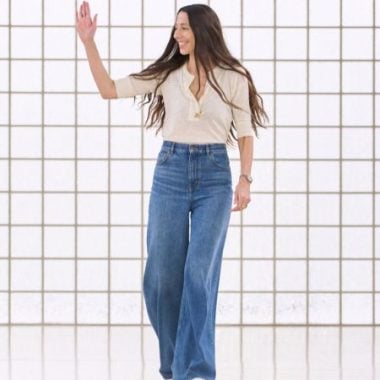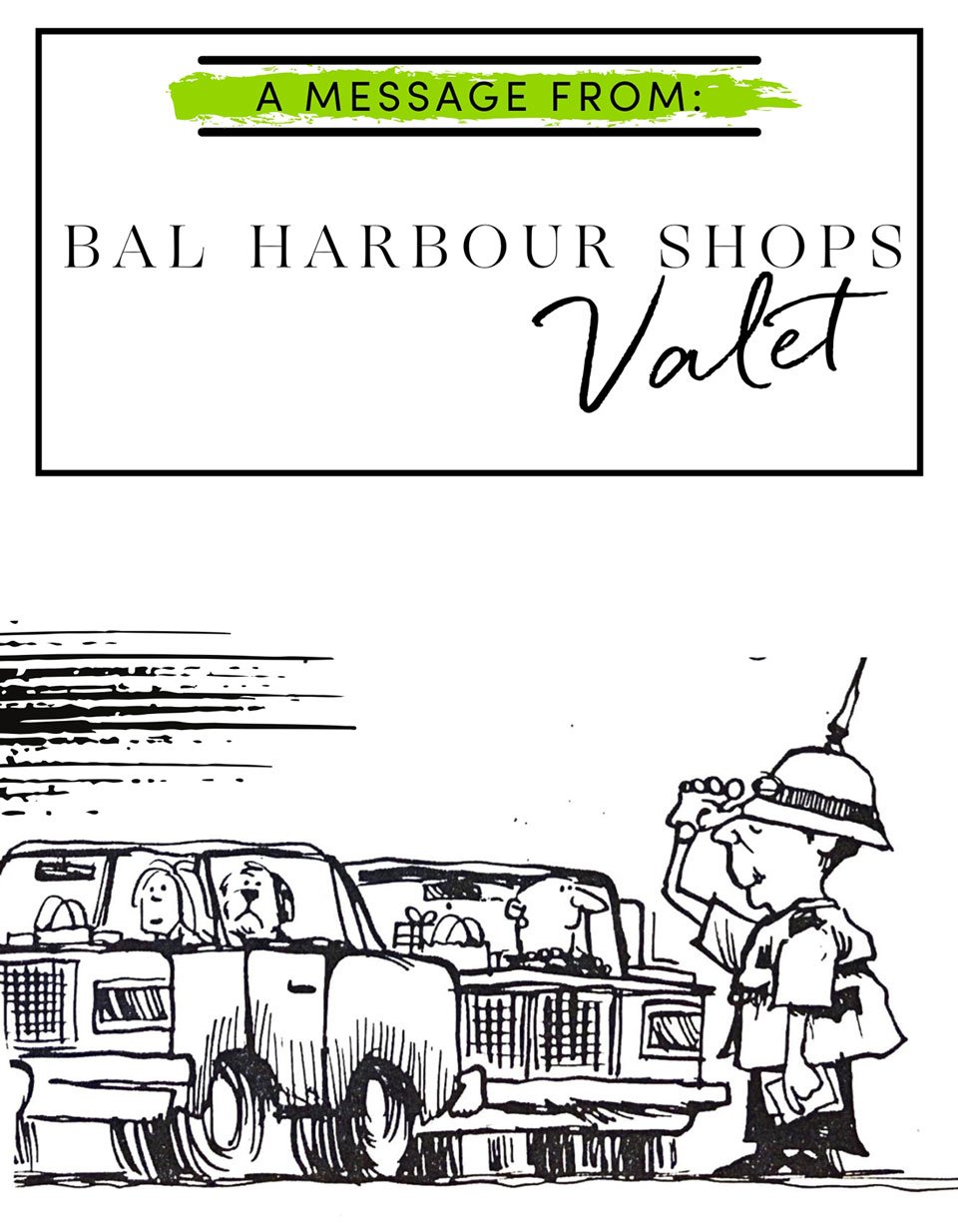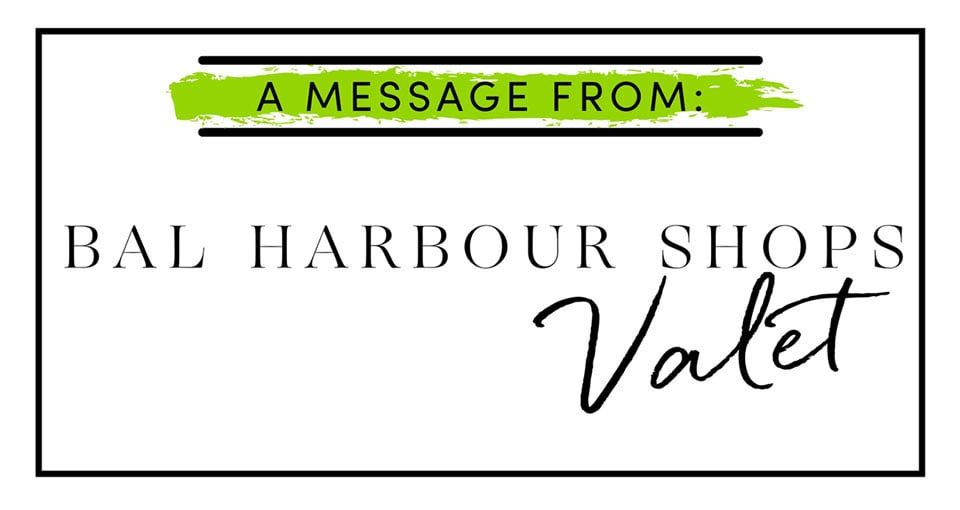By Alessandra Codinha
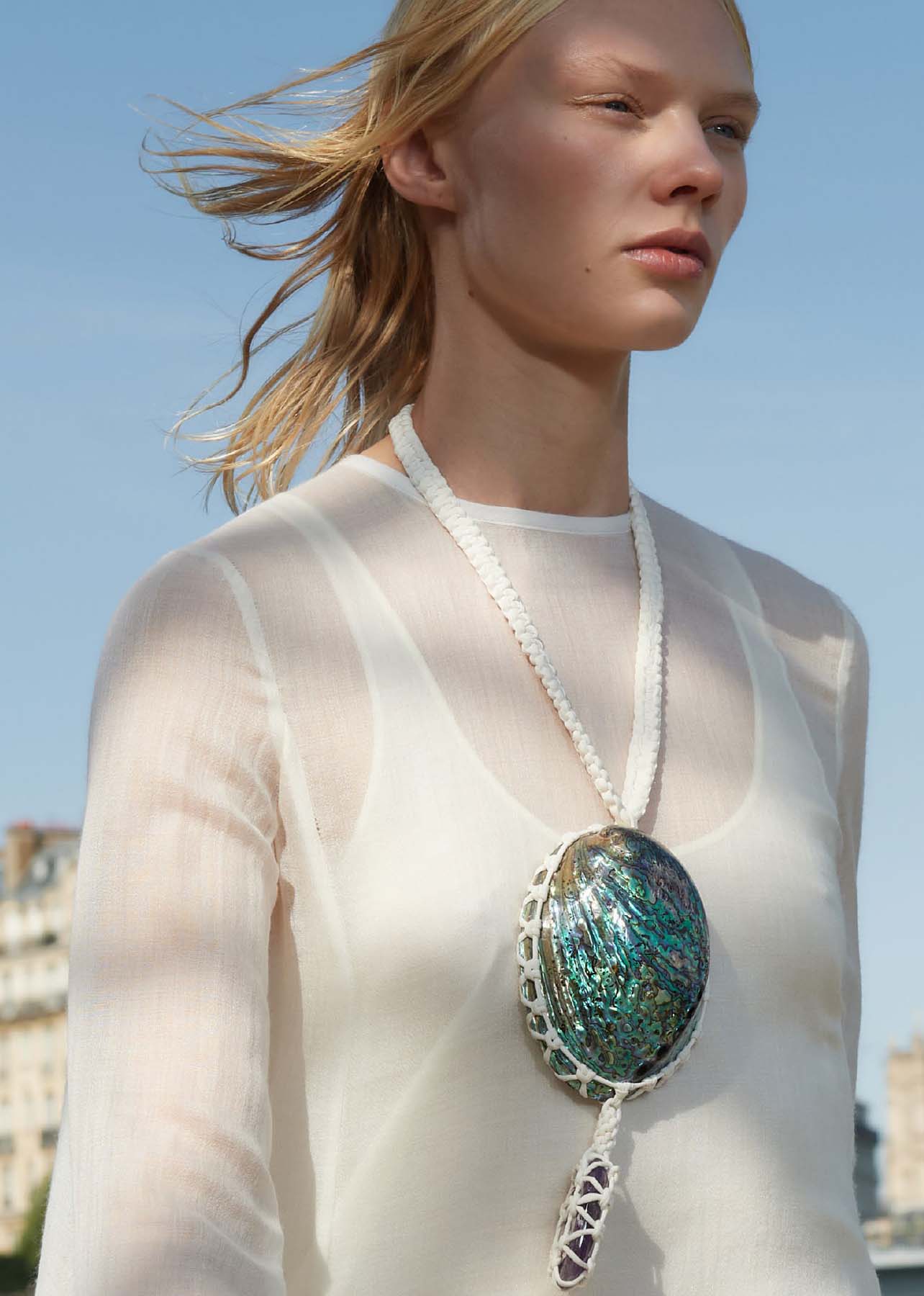
A naturally sourced amethyst and Haliotis iris shell necklace made in collaboration with the social justice organization, Akanjo.
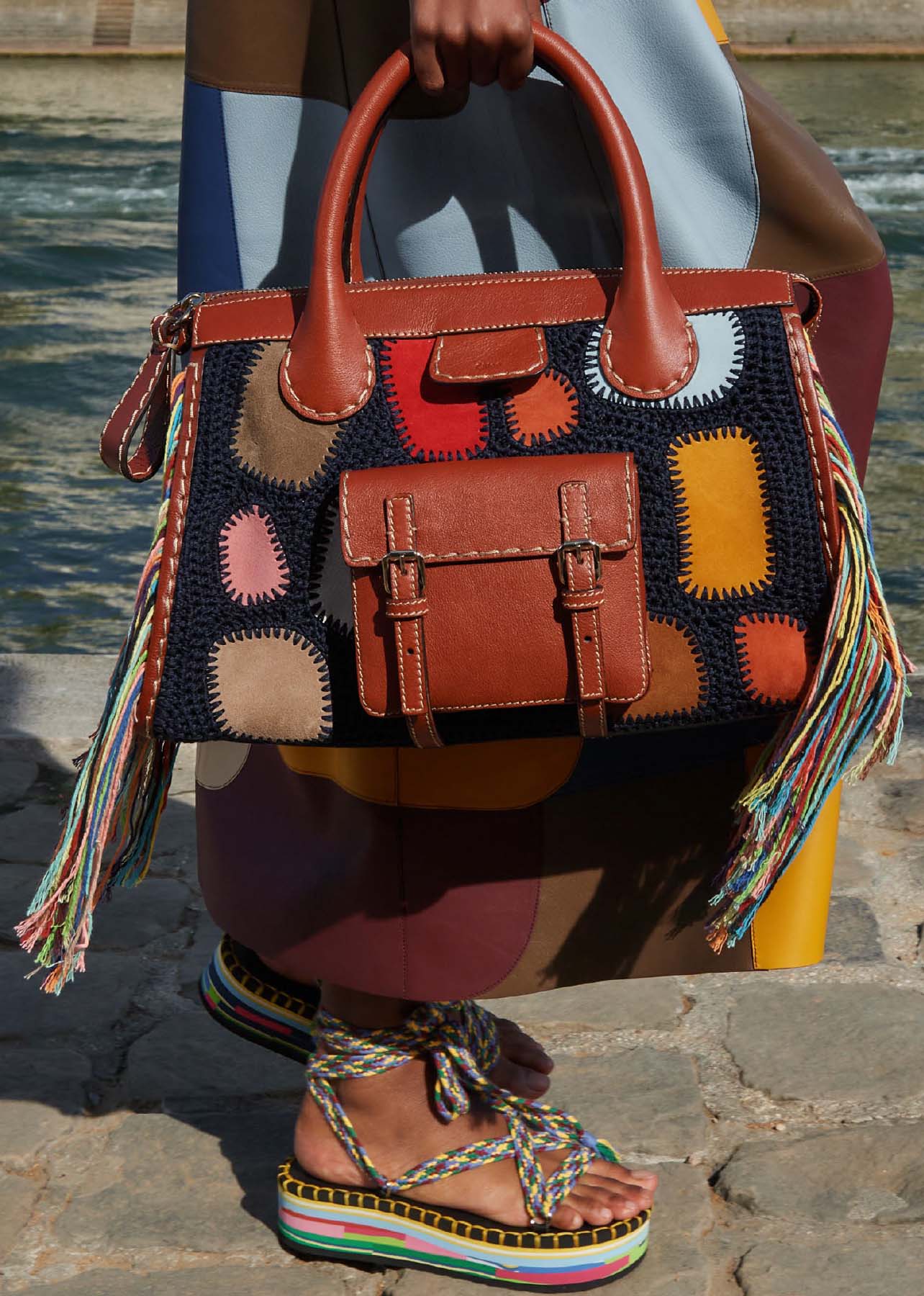
Lolla tote bag, made from hand-knotted deadstock silk and vegetable-tanned calfskin.
Sustainability may be one of fashion’s favorite buzzwords these days, but for Gabriela Hearst, going green is about far more than a trend. The Uruguay-born designer has been among the more outspoken proponents of sustainable practices in the fashion industry since she first launched her namesake brand in New York in 2015, and in the intervening years she has not once deviated from that purpose. She turned typically-ignored factors like compostable packaging and dead-stock fabrics into real luxury goods, and in 2019 held the first ever certified carbon-neutral fashion show. Hearst has been open about her goal for her brand to use 100 percent repurposed materials, (up from around 50 percent last year). And while her attention has surely been divided since her appointment as creative director for Chloé in December of 2020, her ardor for a more healthy and equitable relationship between the fashion industry and the planet certainly hasn’t diminished.
Hearst’s mission is to get the historically pollutive fashion industry on track to a safer, greener system. Her plan? To bring in changes in sourcing, supply chain, traceability and environmental and social responsibility, while still providing beautiful, covetable products. With the launch of Chloé Craft at the Spring 2022 show in Paris, Hearst demonstrated her steady hand and an elegant, grown-up version of the free-flowing bohemian familiar to followers of a house previously led by the likes of Karl Lagerfeld, Stella McCartney and Phoebe Philo. But, this time, the most luxurious looks among the fringe, flowing skirts and tomboy suiting were also the most ecologically sound. (The show’s run—abbreviated to 31 looks from what usually numbers nearly twice that—was itself a nod to achieving a different kind of sustainability in an industry increasingly infamous for both material excess and designer burnout.) “We’re launching Chloé Craft because I started to realize that this thing that we’re calling ‘luxury fashion’ feels industrialized. It looks very machine-made,” Hearst told a reporter after the show. “I think it’s important to go into a re-education of what craft looks like.”
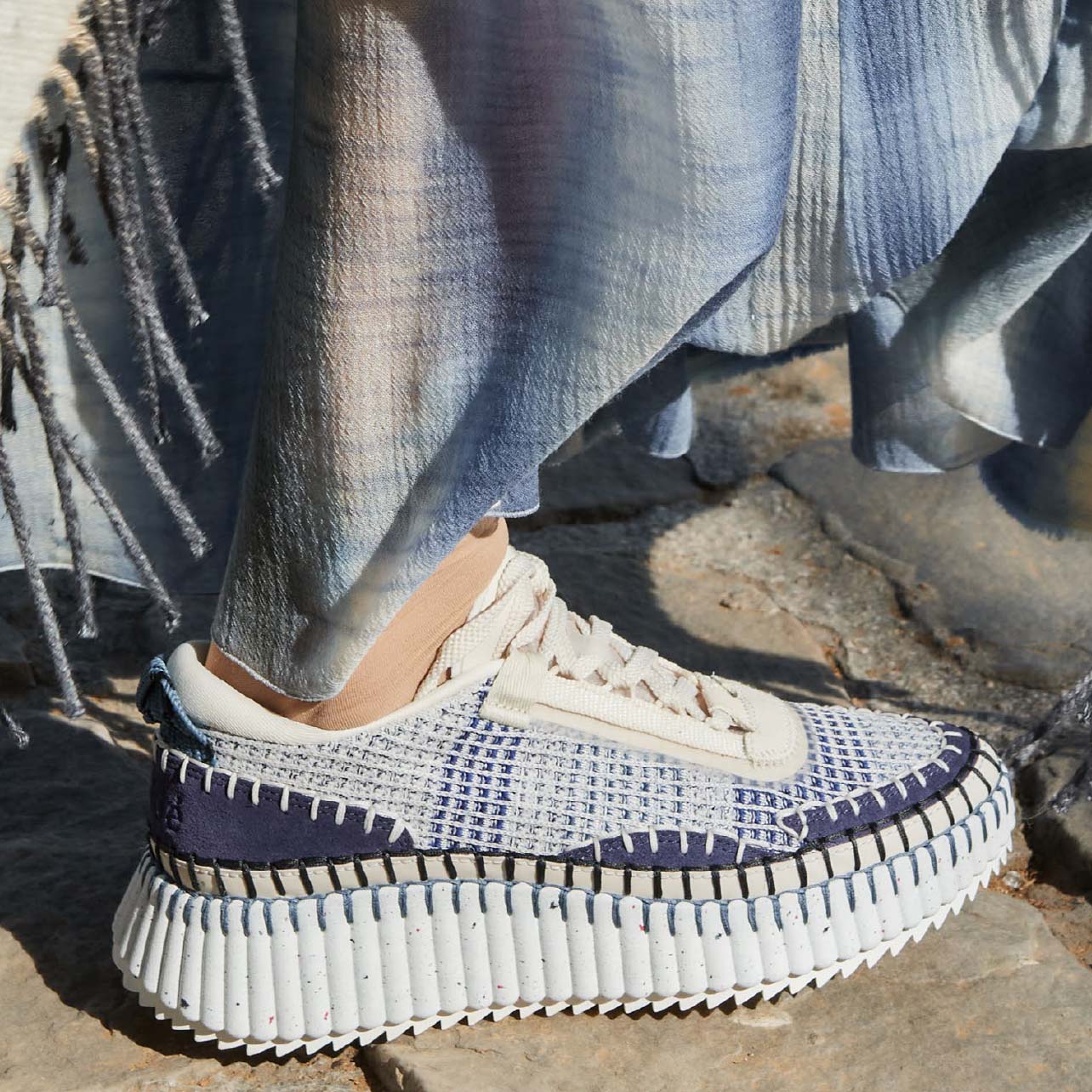
Nama sneakers made from recycled materials collected by the organization Ocean Sole.
Chloé Craft pieces are distinguishable via a special label with a spiral logo denoting, as Hearst put it, “techniques that cannot be mimicked by machinery, only mastered by the human hand.” And not just any hand. Her crafting collaborators incorporate a series of nonprofit groups and social enterprises: Akanjo, a sewing organization in Madagascar who affixed shells to the collection’s necklaces and dresses; Kenyan- based nonprofit Ocean Sole, who retrieve flip flop sandals from the ocean and make them into a reusable material Hearst used in her shoes; bags hand-woven in Kenya by female artists at Mifuko, a fair-trade organization. (Each bag is embossed with the name of the woman who wove it, underlining Hearst’s belief that her customer relishes such provenance.)
This dedication extends far beyond the Craft collection, demonstrating that it is not an eco-friendly capsule or small concession to make up for years at the top of the heap in an industry known for filling landfills. It is a top-to-tail reevaluation of the way things are and the way they ought to be. The real challenge going forward, as Chloé detailed in the show notes, is to extend these ways of thinking into the rest of the brand, and hopefully the industry at large. The house plans to find ways to make the items produced in larger quantities more eco-conscious, and have announced their determination to limit the environmental impact of forthcoming collections by, among other factors, incorporating lower-impact materials: wool that is recycled, or from farms that respect animal welfare, biodiversity and soil health; vegetable-based dyes; deadstock fabrics and trimmings; and linen, which emits less greenhouse gasses and requires less water to cultivate than cotton. The set for the show was made in collaboration with the Senegalese non-profit Les Bâtisseuses, a network that trains female refugees in ecological construction, and guests sat on cushions made from Chloé fabric scraps. Lest you think any detail was overlooked, catering leftovers were donated to Linkee, a Paris-based NGO fighting food-waste, and the press materials detailed Chloé work to monitor and reduce their greenhouse gas emissions globally through a carbon offsetting partnership with EcoAct, which provides clean water to people in Ethiopia. These efforts are exhaustive, well-researched and inclusive, and are setting an example to be followed across the fashion industry—and perhaps most impressively, for Hearst, they are likely only just the beginning.
Images courtesy of Chloé.

